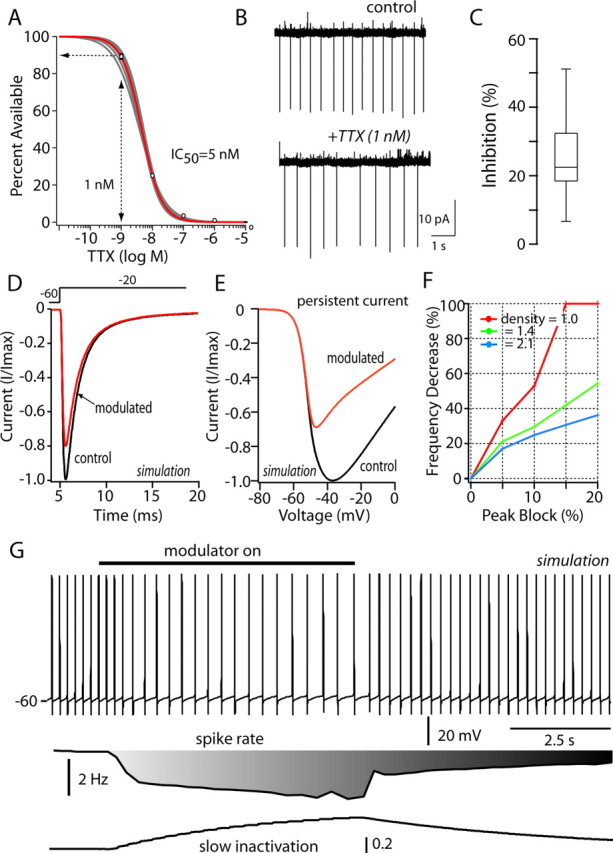Figure 10.

Modest reduction of Na+ channel currents mimics D2 receptor effects on pacemaking. A, Dose-response for relationship for TTX in acutely isolated cholinergic interneurons (n = 5). Peak transient Na+ current, evoked by a step to -20 mV from a holding potential of -80 mV as a function of TTX dose, was fit with a Langmuir isotherm, having a slope of one and an IC50 of 5 nm. B, Cell-attached patch recording in tissue slices before and after bath application of 1 nm TTX. C, The median reduction in discharge rate was just >20% (n = 5); data are shown in box plot format. D, Simulation of Na+ channel currents evoked by a step to -20 mV before and after enhancing entry into the slow-inactivated state from the fast-inactivated state (Carr et al., 2003) (aS2 = 0.0002 → 0.005); the modulation was restricted to the kinetically fast current. Total (fast + slow) Na+ current evoked by the step was reduced by 20% as in experimental observations. E, The same change produced a larger reduction (∼40%) in the total current evoked by a voltage ramp. F, The reduction in autonomous discharge rate increased monotonically as the percentage reduction in transient current was increased from 5 to 20%. Channel densities from 1.0 to 2.1 mS/cm2 yielded qualitatively similar relationships. G, In a simulation of pacemaking (Na+ channel density of 1.4 mS/cm2), mimicking the D2 receptor modulation by selectively increasing Na+ channel entry into a slow-inactivated state (as in D, E) slowed the discharge rate by >40%. Restoration of the control values for this rate constant restored the discharge rate. The bar depicts the onset and offset of the change in slow inactivation. At the bottom, the change in discharge rate and slow inactivation in the affected channel population are plotted.
